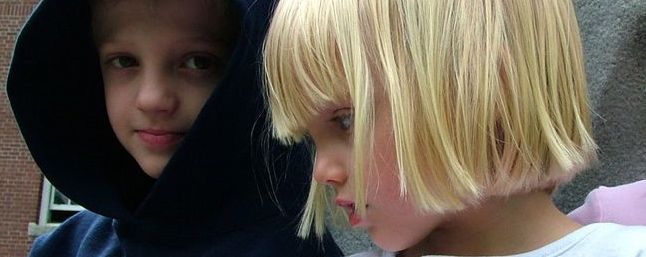While psychology — in particular psychoanalysis — so frequently focuses on early childhood experiences, it’s surprising to find that relatively little has been written on the subject of siblings.
Lately, however, researchers have found that in many ways one’s siblings have a great impact on a person — in childhood, of course, but also on the direction of later life. How that person views himself and feels about himself.
Whether from a large family or small, the dynamic is similar: Not only does the chronological order of the sibling have an effect on development, but also the siblings’ treatment of one another.
“Sibling rivalry” has many connotations. There are good reasons for that expression to exist. But what is the rivalry all about?
There appear to be fundamental connections with survival. “Is there enough food to go around?” Does the older sibling literally (as in the animal kingdom) push younger siblings from the nest in order to better position himself in the pecking order?
Certainly this aspect surfaces in some extreme cases — in homes where food is scarce. Where parents can barely make ends meet.
Yet the causes of sibling rivalry are far more complex than simply a shortage of food.
When Harry Harlow studied baby monkeys at Goon Park, what he discovered was remarkable. When baby monkeys were caged with a wire mother monkey holding a bottle of milk, the babies did not drink the milk even though it appeared key to their survival.
When baby monkeys were caged with a wire monkey covered in cloth (but with no milk), the baby monkeys clinging to the warmth of the cloth were more likely to thrive, far more than those simply offered milk.
What was recognized at that time was the far-reaching effects of comfort and warmth in producing stability and safety.
In homes where comfort and empathy are lacking, siblings are more likely to turn on once another — even though they’re ignorant of the emotional void in their environment.
When a child goes to a parent for a hug or cries to be held and that parent shuns the child, for whatever reason, that rejection for a child can be literally life-threatening. Unless the child receives this comfort from another source, the dangers are untold over time.
When siblings turn on one another, it also may be that emotional deprivation is the cause. Unless this dynamic is identified and rectified, siblings will compete in other aspects of life in an effort to compensate for this basic deficit.
The danger also lies in verbal assaults and shaming roles: Scapegoating the more sensitive of the siblings as “cry babies” who are weaker than the others.
The illusion of the preferred child: You were mom’s favorite, or dad loved you best. Whatever may be heard along these lines creates its own burdens and misnomers that persist through the years.
So-called preferred children also amass an inordinate burden of trying to “please” — never really experiencing their true selves until they find the strength to rebel.
The way back: Unless the light of empathic awareness is shared between siblings, they may become estranged for a lifetime. The core losses and unmet longings of their mutual lives must be brought forward, shared and understood. For adults carrying the burden of unexpressed pain and loneliness from their childhoods, sometimes only a sibling can bring true relief.
Only siblings know what really happened in their homes. Only siblings were on the front lines and remain able to bear witness to the pain and suffering.
Siblings can heal one another in miraculous ways.
